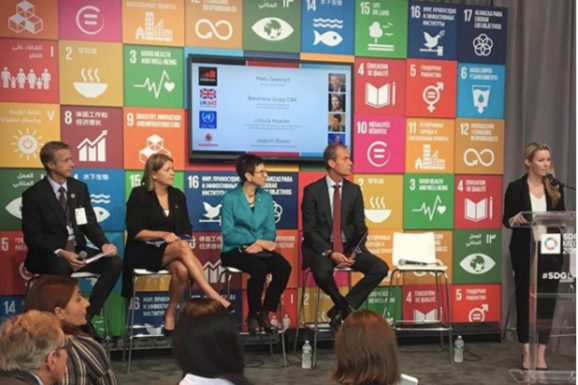We recently wrote about the important value proposition for businesses in meeting the public’s desire to see data, outcomes, and impact when reporting information on a company’s CSR/sustainability information. We noted that Handshake’s research shows that the public wants companies to use their business to have a positive impact on society—and proactively demonstrate how that is achieved through clear, understandable facts and data.
Without a doubt, that is a difficult challenge. But, through our work with a number of clients and organizations that have made a long-term commitment to improving society, Handshake has identified five important steps any organization must take.
1. Identify the “Problem to Solve.” No company is expected to solve all of the challenges facing society today. However, as our research shows, companies are expected to achieve a measurable impact on society through their day-to-day operations. Thus, within that context, executives must identify and address a core set of meaningful issues to improve society that is aligned with their business. This step establishes the “intent” behind the effort, something Stephan Meier and Lea Cassar argue is more important than showing its impact on the bottom line of the organization.
2. Establish a framework for how to measure, monitor, and report on the work. Handshake has defined a methodology by which organizations can measure the ROI on their work to improve society. As we have discovered in our work with clients, the most important step occurs very early in the process—identify how the intended goals and outcomes will be measured.
3. Build a network. One of the foundational principles of Handshake is that nothing of consequence can be achieved alone. If an organization wants to achieve lasting impact through its work, it must build a network of partners, collaborators, and experts. Networks are where ideas are incubated, the established order is disrupted, and solutions to challenging problems are brought to fruition.
4. Engage to communicate. The public (consumers, policymakers, investors, community activists, etc.) is actively looking for information about impact and outcomes. However, all of them are facing “information overload” with all kinds of news and information coming their way. Therefore, if an organization wants the public to learn about its work, it must bring its story to them in a myriad of ways, ranging from generating news coverage, creating compelling website content, using social media, participating in influential events such as Davos, SXSW, the Milken Global Conference, UN Global Goals Week, and hosting curated convenings such as private dinners and roundtables.
5. Play the long game. Building influence to achieve lasting impact takes a lot of time, energy, and resources. As we noted last year, corporate leaders now have permission from society to make long-term investments to achieve something that is enduring and provides lasting value.
While we sympathize with the sentiment held by many corporate executives that they should be free to simply do good things for society and not have to talk about it, that is not the way business is conducted today. The stakes are too high for the brand, reputation, and business model for every company. Instead, making an impact on society and communicating that work in an authentic and transparent manner is a business imperative.
Image credit: SDG Media Zone

